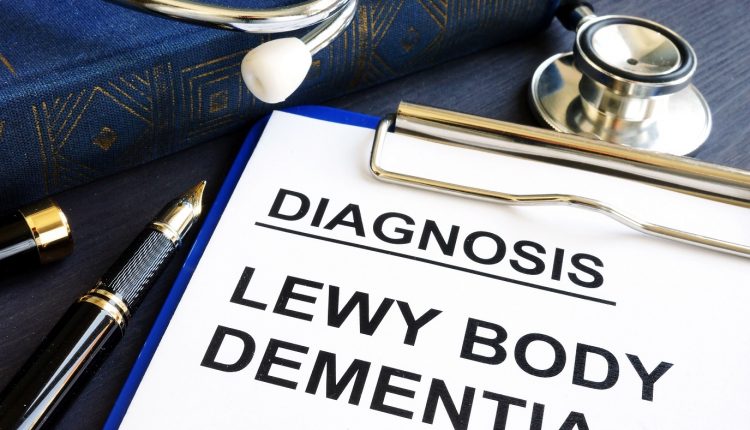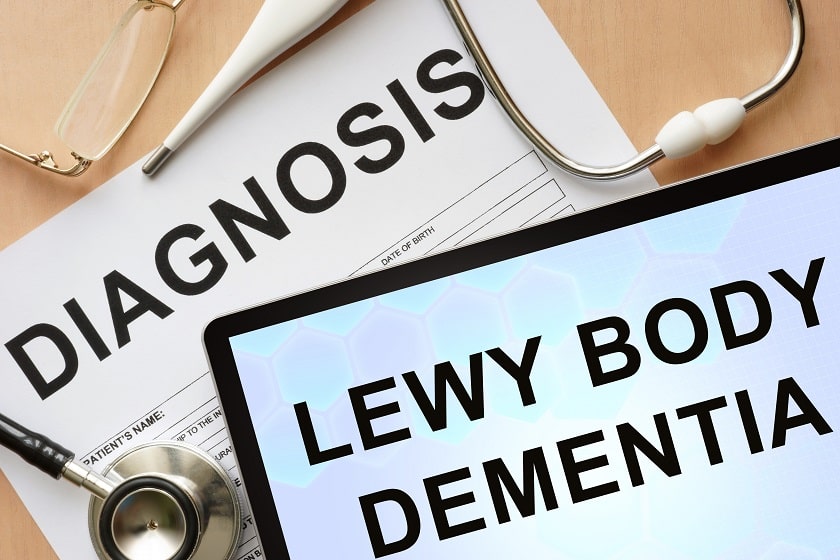
Lewy Body Dementia vs Alzheimer’s disease
Alzheimer’s disease and Lewy body dementia are different forms of dementia. Both progressive disorders have similarities and apparent differences. This article examines the differences between Lewy body dementia and Alzheimer’s disease and looks at Lewy Body Dementia vs Alzheimer’s. In addition, each condition’s causes, symptoms, and prognosis (expected outcome) are compared, as well as the risk factors and treatment options. So, read on to learn more about Lewy Body Dementia vs Dementia.
Contents
Lewy Body Dementia vs Alzheimer’s

Both Lewy body dementia and Alzheimer’s disease have similarities but are not the same. To begin with, let’s look at how each type of dementia differs:
- Lewy body dementia (LBD) affects executive function (problem-solving), speed of thinking, memory, movement, and mood, similar to Parkinson’s disease. In addition to visual hallucinations, Lewy body dementia can affect attention and alertness and cause movement difficulties such as tremors and stiffness.
- Alzheimer’s disease is the most common form of dementia that primarily affects memory, behaviour, and language. Symptoms include trouble recalling events, recognizing people, naming objects, and also learning new information.
Often, people with Lewy body dementia are mistakenly diagnosed with Alzheimer’s disease due to similar symptoms in the early stages.
Lewy body dementia and Alzheimer’s have underlying causes that often overlap. Therefore, a person with Lewy body dementia may exhibit Alzheimer-type brain changes, resulting in mixed dementia symptoms and characteristics.
The following chart summarizes the main differences between Lewy body dementia and Alzheimer’s:
Differences Between Alzheimer’s and Lewy Body Dementia
| Lewy Body Dementia | Alzheimer’s Disease | |
|---|---|---|
| Age | Symptoms typically appear around age 50 but can occur earlier. | Symptoms usually appear between the ages of 60 and 70, but they can also occur at an earlier age. |
| Prevalence | 1.4 million people (U.S.) | 5.8 million people (U.S.) |
| Causes | In Lewy body dementia, abnormal deposits of proteins called Lewy bodies accumulate in the brain. Parkinson’s disease dementia is also associated with these proteins. | Alzheimer’s disease is caused by an abnormal buildup of amyloid proteins in the brain and the abnormal production of tau proteins, which interfere with nerve signals. |
| Risk factors | Family history and a history of anxiety and depression | Family history, traumatic brain injury, and being Black or Latin |
| Symptoms | As a result of Lewy body dementia, you may experience difficulties with sleep, behaviour, perception, mood, alertness, awareness, and problem-solving abilities. A common occurrence is hallucinations. As the disease progresses, memory loss may occur. | Memory, awareness, and language are gradually lost due to Alzheimer’s disease. As the disease progresses, hallucinations may occur. However, memory loss is typically an early feature. |
| Treatment | There is no cure for Lewy body dementia. However, some symptoms can be managed with targeted treatments. | There is no cure, but certain medications and targeted treatments can slow cognitive decline. |
| Prognosis | Survival time is between 3 and 5 years after symptoms appear. | Survival time ranges from 4 to 10 years after symptoms appear. |
The Prevalence of Lewy Body Dementia vs Alzheimer’s
Lewy body dementia is the second most common type of dementia, affecting an estimated 1.4 million Americans. The prevalence of this disease is slightly higher in males than in females. Due to Lewy body dementia’s underdiagnosis, the actual number of people suffering from it may be higher.
The most common type of dementia is Alzheimer’s disease. In the United States, 5.8 million people suffer from this progressive neurodegenerative disease. Although females tend to live longer than males, they are more likely to be affected by the disease. Approximately 5% of adults aged 60 to 74 have Alzheimer’s disease, increasing to 14% in adults aged 75 to 84.
Causes and Risk Factors
Below are the causes and risk factors for each condition.
Lewy Body Dementia
Lewy body dementia has no known cause, but it may be related to neurotransmitter changes.
Those with Lewy bodies lose nerve cells that produce dopamine and acetylcholine, two neurotransmitters. These are essential for various functions, including memory, learning, behaviour, cognition, and sleep.
Risk factors for LBD include:
- Age and diseases such as Parkinson’s
- REM sleep behaviour disorder
- A family member with Lewy body dementia

Alzheimer’s disease
Several factors may contribute to the development of Alzheimer’s disease, including genetics, environment, and lifestyle. Another key factor is that the brain’s amyloid and tau protein buildups also cause plaques and tangles that damage nerve cells.
Risk factors for Alzheimer’s disease may include:
- Age and genetics
- Having a family member with Alzheimer’s
- Conditions associated with the vascular system, such as high blood pressure, heart disease, diabetes, or stroke
- Obesity and head injury
- Older adults who are Latino or African American may have a higher risk than white adults, which may be due to higher rates of vascular conditions.
Symptoms of Lewy Body Dementia vs Alzheimer’s
The following table compares some of the symptoms of Lewy body dementia and Alzheimer’s disease.
| Lewy Body Dementia | Alzheimer’s Disease | |
|---|---|---|
| Cognition | Each day may bring different difficulties with memory, reasoning, executive functions, and visual and spatial skills. | Difficulties with memory, reasoning, executive functions, and visual and spatial skills, which may worsen over time. |
| Physical Movement | The symptoms are similar to Parkinson’s disease, including rigidity, muscle stiffness, and tremors. It is also possible for people to faint or fall. | People may also have spatial awareness issues. |
| Facial Expressions | People with Lewy body dementia may also have reduced facial expression. | Alzheimer’s may cause an increase in apathy and a decrease in emotional responsiveness. Alzheimer’s patients may also have trouble recognizing emotions in others’ facial expressions. |
| Visual Hallucinations | Early symptoms of Lewy body dementia may be accompanied by intense visual hallucinations in up to 80% of people. | It is possible to have hallucinations as Alzheimer’s progresses, including those related to smell and hearing. |
| Sleep Behavior Disorder (RBD) | Some people with Lewy body dementia may also suffer from RBD, in which they act out their dreams, which can result in dangerous behaviours. | RBD is not a symptom of Alzheimer’s. |
Treatment

The treatment of Lewy body dementia and Alzheimer’s differs significantly. While some drugs can be used for both disorders, others have proven to slow the progression of Alzheimer’s only.
Lewy Body Dementia
There is no cure for this type of dementia. Medication, physical therapy, and counselling can all be used as treatments for some symptoms. Moreover, the plan may also involve improving home safety and the everyday quality of life. A combination of drugs may also improve mobility problems related to Lewy body dementia, but symptoms cannot be reversed.
Alzheimer’s Disease
In Alzheimer’s disease, treatments aim to alleviate symptoms, preserve mental function, and slow disease progression.
Among the treatment options are:
- Medications and cognitive training
- Behavioural therapy and physical activity
A healthcare professional may also prescribe the following if other methods have not proven effective.
- Sleep aids
- Anti-anxiety drugs and antipsychotics
Final Words
Lewy body dementia and Alzheimer’s disease are two of the most common forms of dementia that differ in many important ways. A common feature of both disorders is an abnormal buildup of proteins in the brain, whereas those related to LBD are Lewy bodies, and those associated with Alzheimer’s are amyloids. Furthermore, Lewy body dementia progresses more rapidly and affects many mental and physical domains, including thought, behaviour, alertness, awareness, sleep, moods, and movement. However, Alzheimer’s progresses somewhat slower and mainly affects memory, behaviour, cognition, and language. Since the causes and risk factors differ, the treatment of Lewy body dementia and Alzheimer’s also varies. Even so, Lewy body dementia can be misdiagnosed as Alzheimer’s, leading to inappropriate treatment.